Sujit Kumar Sahoo
School of Electrical Sciences, Indian Institute of Technology Goa
Rate-Splitting Sparse Code Multiple Access
Jan 26, 2025Abstract:This paper presents a novel rate-splitting sparse code multiple access (RS-SCMA) framework, where common messages are transmitted using quadrature phase-shift keying (QPSK) modulation, while private messages are sent using SCMA encoding. A key feature of RS-SCMA is its ability to achieve a tunable overloading factor by adjusting the splitting factor. This flexibility enables an optimal trade-off, ensuring the system maintains superior performance across varying levels of overloading factor. We present a detailed transceiver design and analyze the influence of rate-splitting on the overloading factor. Extensive simulation results, both with and without low-density parity-check (LDPC) codes, highlight RS-SCMA's potential as a strong candidate for next-generation multiple access technologies.
Enhanced Fast Iterative Shrinkage Thresholding Algorithm For Linear Inverse Problem
Nov 28, 2022



Abstract:The linear inverse problem emerges from various real-world applications such as Image deblurring, inpainting, etc., which are still thrust research areas for image quality improvement. In this paper, we have introduced a new algorithm called the Enhanced fast iterative shrinkage thresholding algorithm (EFISTA) for linear inverse problems. This algorithm uses a weighted least square term and a scaled version of the regularization parameter to accelerate the objective function minimization. The image deblurring simulation results show that EFISTA has a superior execution speed, with an improved performance than its predecessors in terms of peak-signal-to-noise ratio (PSNR), particularly at a high noise level. With these motivating results, we can say that the proposed EFISTA can also be helpful for other linear inverse problems to improve the reconstruction speed and handle noise effectively.
Non-invasive super-resolution imaging through scattering media using fluctuating speckles
Sep 16, 2021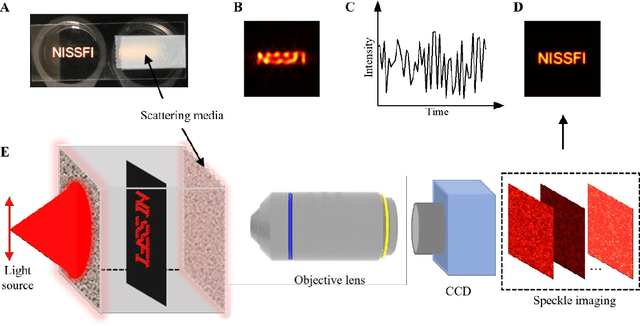
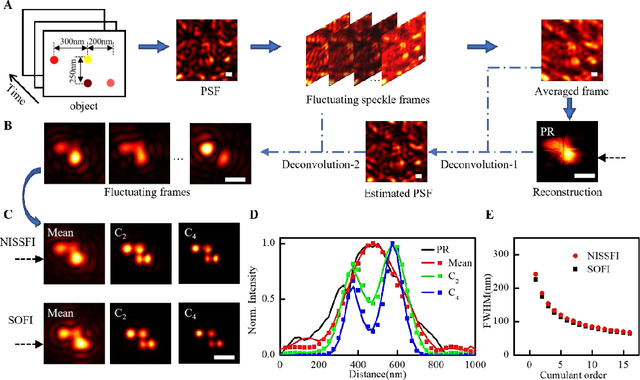
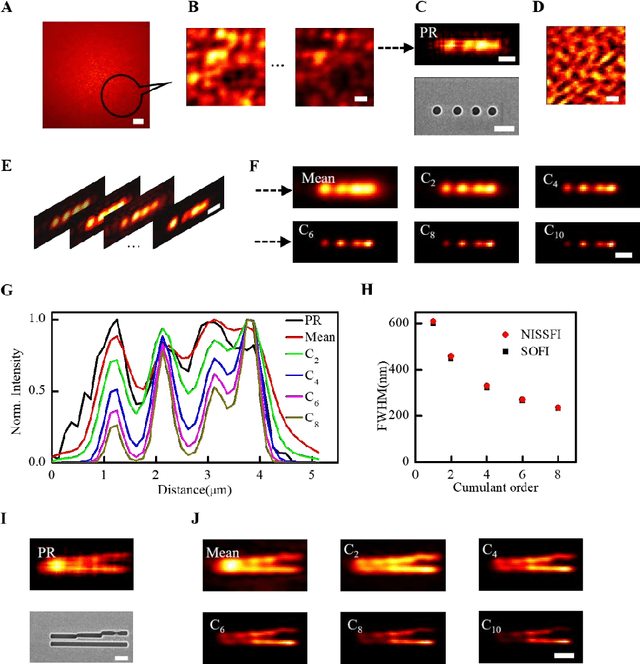
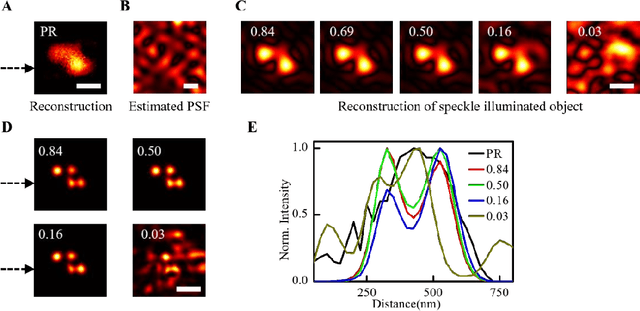
Abstract:Extending super-resolution imaging techniques to objects hidden in strongly scattering media potentially revolutionize the technical analysis for much broader categories of samples, such as biological tissues. The main challenge is the media's inhomogeneous structures which scramble the light path and create noise-like speckle patterns, hindering the object's visualization even at a low-resolution level. Here, we propose a computational method relying on the object's spatial and temporal fluctuation to visualize nanoscale objects through scattering media non-invasively. The fluctuating object can be achieved by random speckle illumination, illuminating through dynamic scattering media, or flickering emitters. The optical memory effect allows us to derive the object at diffraction limit resolution and estimate the point spreading function (PSF). Multiple images of the fluctuating object are obtained by deconvolution, then super-resolution images are achieved by computing the high order cumulants. Non-linearity of high order cumulant significantly suppresses the noise and artifacts in the resulting images and enhances the resolution by a factor of $\sqrt{N}$, where $N$ is the cumulant order. Our non-invasive super-resolution speckle fluctuation imaging (NISFFI) presents a nanoscopy technique with very simple hardware to visualize samples behind scattering media.
Local Sparse Approximation for Image Restoration with Adaptive Block Size Selection
Dec 20, 2016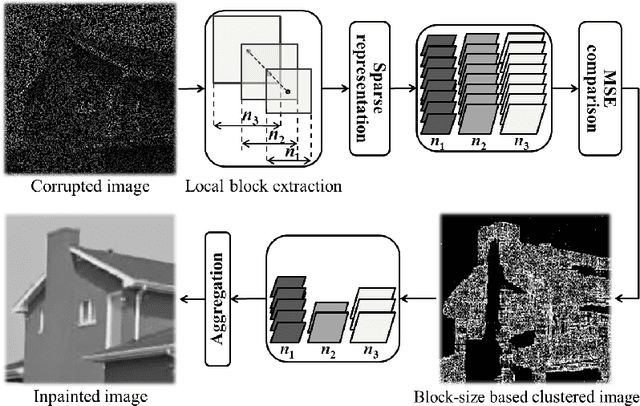
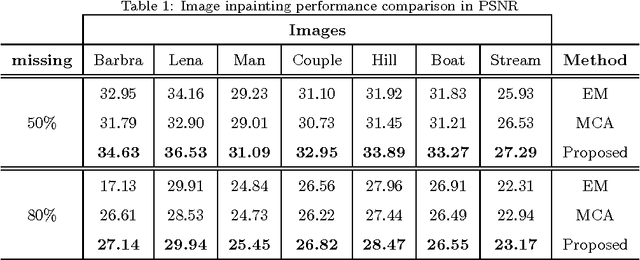
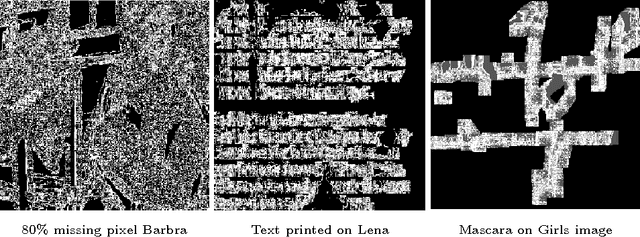
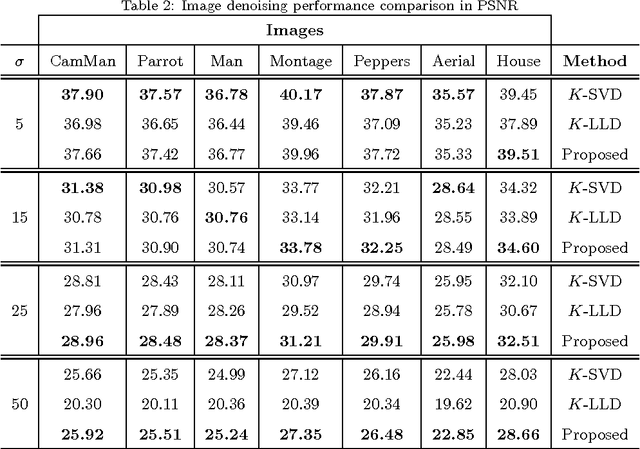
Abstract:In this paper the problem of image restoration (denoising and inpainting) is approached using sparse approximation of local image blocks. The local image blocks are extracted by sliding square windows over the image. An adaptive block size selection procedure for local sparse approximation is proposed, which affects the global recovery of underlying image. Ideally the adaptive local block selection yields the minimum mean square error (MMSE) in recovered image. This framework gives us a clustered image based on the selected block size, then each cluster is restored separately using sparse approximation. The results obtained using the proposed framework are very much comparable with the recently proposed image restoration techniques.
 Add to Chrome
Add to Chrome Add to Firefox
Add to Firefox Add to Edge
Add to Edge